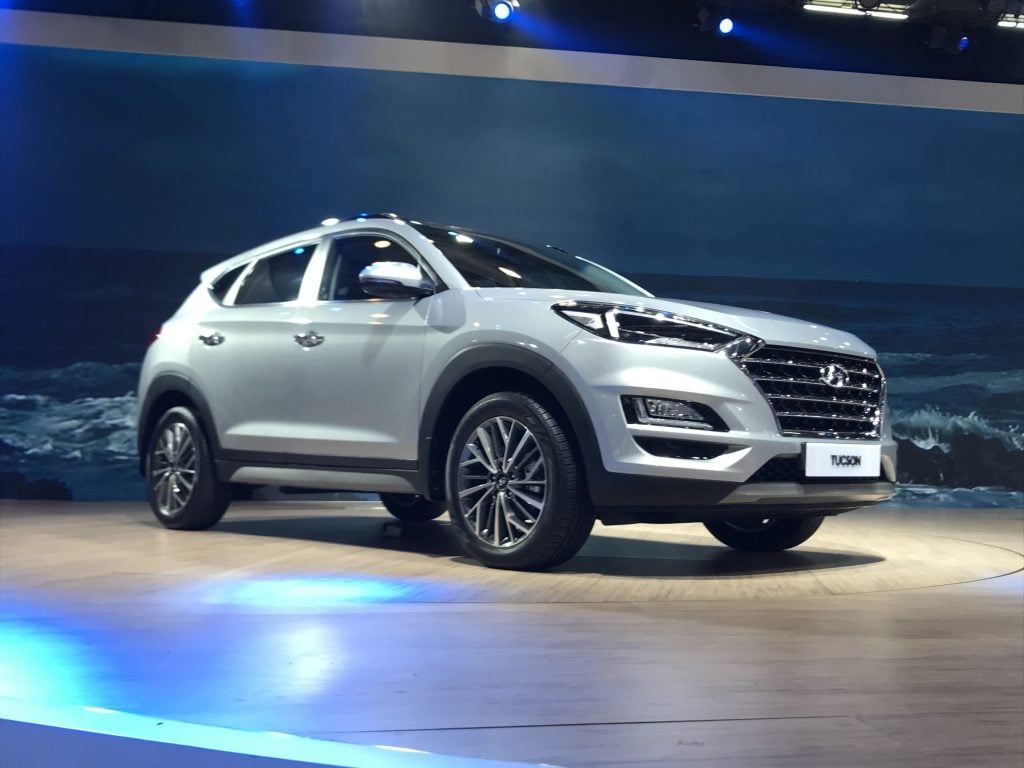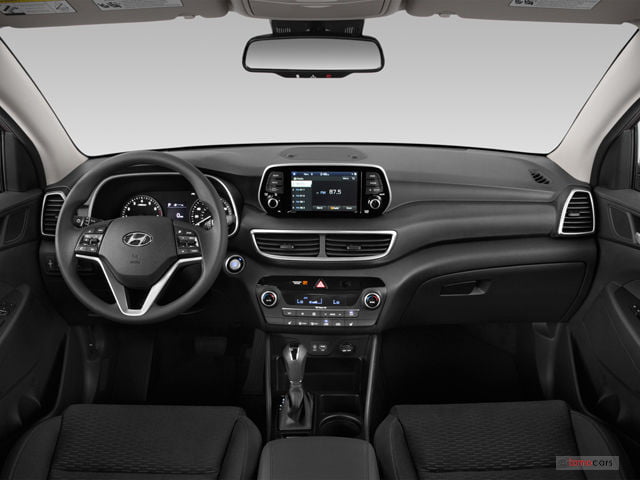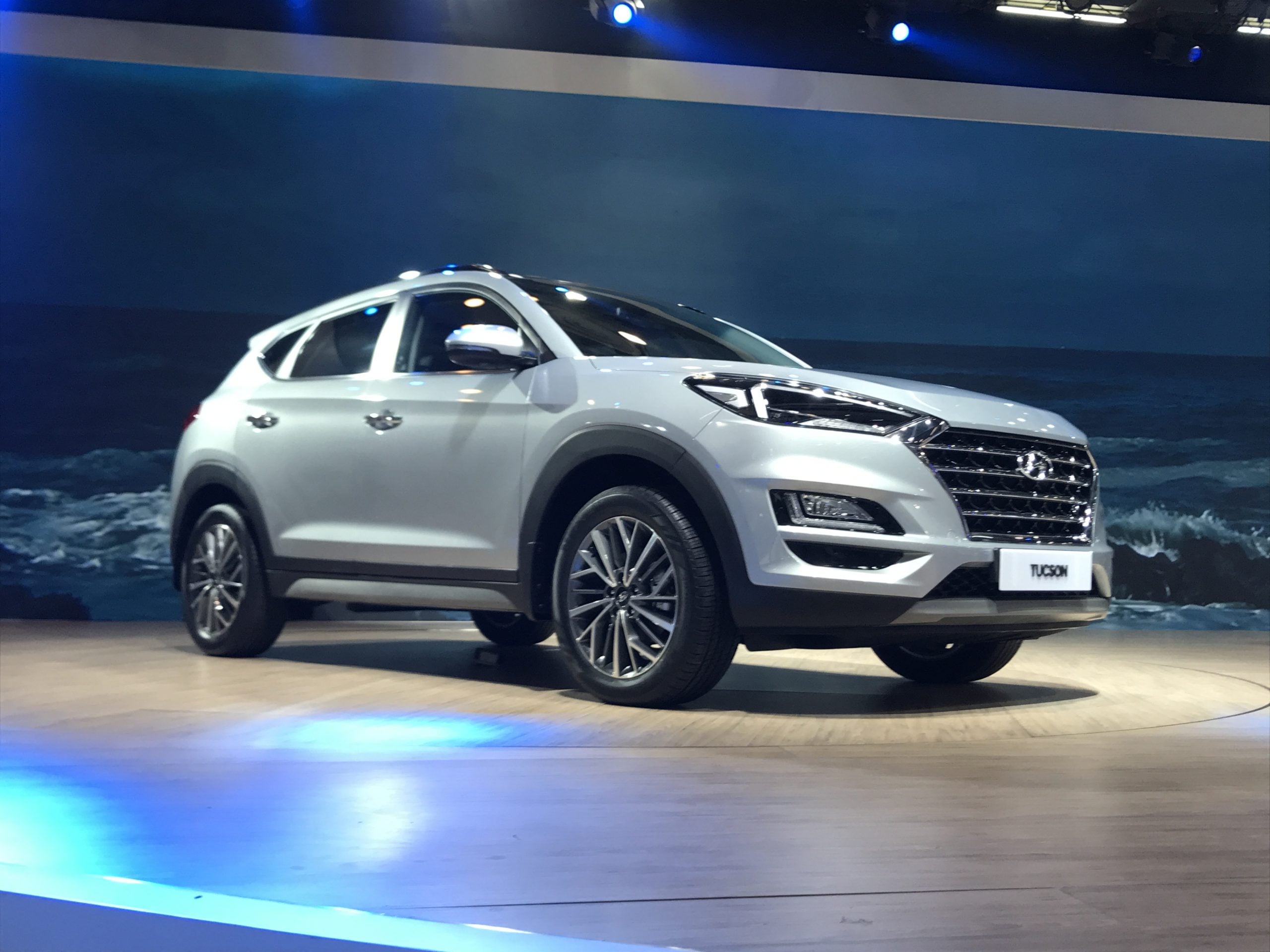With the facelift, the base price of the Hyundai Tucson has now gone up by about Rs 4.5 lakh while the top-end model is priced more or less the same. There are styling updates, more features and BS6 engines as part of the facelift.
After the launch of the Verna facelift, Hyundai has now launched the 2020 Tucson facelift in India for a special introductory price of Rs 22.3 lakh, ex-showroom. Prices for the top-spec diesel AWD variant go all the way up to Rs 27.03 lakh. The company showcased the Tucson facelift at the Auto Expo this year and it would have been launched much earlier if not for the Covid-19 situation. However, it has finally arrived and there are quite a few updates to speak of. Here’s the detailed price list of the 2020 Hyundai Tucson Facelift
| Variants | Petrol | Diesel |
| GL(O) | Rs 22.30 lakh | Rs 24.35 lakh |
| GLS | Rs 23.52 lakh | Rs 25.56 lakh |
| GLS 4WD | Rs 27.03 lakh |

This is essentially a mid-cycle facelift for the Tucson and one of the most important updates to the new Tucson is on its face. The new updates bring the look of the Tucson a lot closer to other newer Hyundais. The updates are subtle and you might even miss it in first glance. However, if you look closely, you will see a larger version of Hyundai’s ‘cascading grille, new headlamps which are full LED and also get new LED DRLs and new bumpers with a revised fog lamp housing.
The side profile remains unchanged except for a new design for the alloy wheels which look really cool. The tail gate has also been slightly revised and it gets new tail lamps as well. All these exterior changes together add up to make significant difference on the SUV and makes it look a lot more modern and upmarket. There are some major updates inside the cabin as well. The dashboard design has been refreshed with a new free-standing 8.0-inch touchscreen infotainment system. This new unit comes with Hyundai’s Blue Link connected car technology.

In the pre-facelift car, the touchscreen infotainment screen came integrated within the dashboard but this new look is much more premium. With the touchscreen being moved up, the AC vents and climate control stack has also been revised and now, it’s in line with the global-spec Tucson. The dashboard now gets an all-black theme and there have been some new features addition as well which include wireless smartphone charger, a panoramic sunroof and electric front-passenger seat adjustment apart from an existing long list of features.
Also Read : MG Hector Plus Price Starts From 13.5 Lakhs; Costlier Than Hector By 65,000!
Under the hood, the powertrain options for the Hyundai Tucson facelift remains the same as the pre-facelift model, albeit in BS6 form. The Tucson is thus powered by a 2.0-litre naturally-aspirated petrol engine that produces 155 bhp and 192 Nm of torque. There’s also a 2.0-litre turbo-diesel engine which produces 185 bhp and 400 Nm of torque. Both the engines come mated to a torque converter automatic gearbox. The one with the petrol is the old 6-speed unit while the diesel gets a new 8-speed unit. All-wheel drive has been reserved for the top-spec diesel trim only.
Also Read : Skoda Rapid Monte Carlo Design and Features Walkaround Video!
Hyundai offers a 3-year/unlimited kilometre standard warranty pack, which can be extended up to 5 years/50,000km. In terms of rivals, the Hyundai SUV will go up against the higher versions of the Jeep Compass range, the Skoda Karoq, the Volkswagen T-Roc and the Honda CR-V. With the facelift, the entry-level price for the Tucson has gone up by about Rs 4.5 lakh while the price of the top-end model remains relatively the same.


